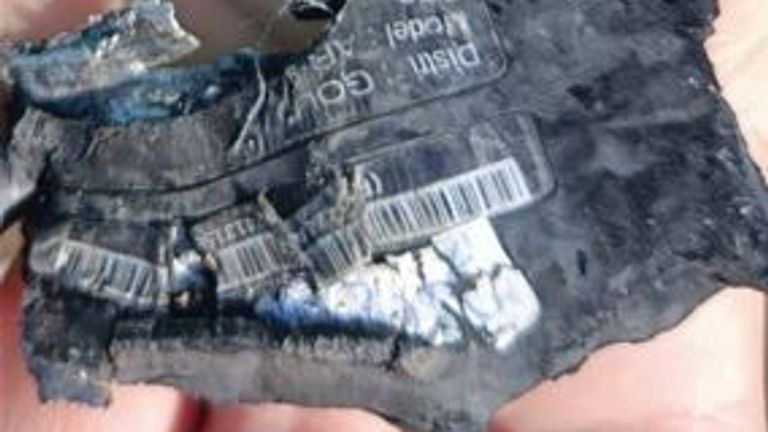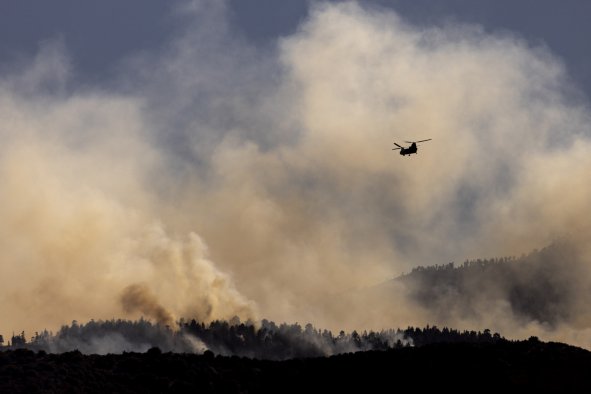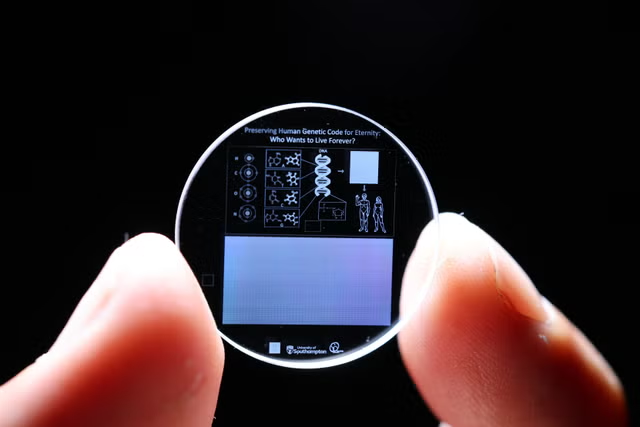Sky News' Data and Forensics team has spoken to four experts to answer the question - how does a pager or hand-held radio explode?
The pagers that exploded in Lebanon on Tuesday are consistent with the AR-924 model of pager with Gold Apollo branding.
The Taiwan-based company has distanced itself from the devices, saying they were made under licence in Budapest by a firm called BAC Consulting.
The chief executive of BAC Consulting, Cristiana Barsony-Arcidiacono, told NBC News, Sky News' US partner: "I don't make the pagers. I am just the intermediate. I think you got it wrong."
Meanwhile, Icom, the Japanese maker of the brand of walkie-talkies linked to the deadly blasts, has said it stopped making the model a decade ago and it would be impossible to lace them with explosives during manufacturing.
Read more: The Budapest firm linked to explosive pagers
So while it might not be clear at what stage the pagers or radios could have been turned into bombs, experts can say how it might have been done.

First, let's look at the explosive - you only need a very small amount, a gram or two is enough to "explode someone's arm or face", says Dr Eyal Pinko, a former Israeli navy and intelligence operative.
It is not yet clear exactly what type of explosive was used. There have been unverified reports pentaerythritol tetranitrate, or PETN, was used. Experts told Sky News it also could have been TNT or another equivalent.
"The point is that you can mix them in with another component effectively to make a plastic explosive," Andrea Sella, professor of chemistry at University College London, says.
"So that means that you could conceivably insert some of this stuff into the nooks and crannies [of a pager]."
The explosives could have been in the battery, inside a detonating device or hidden elsewhere in the pager, Dr Pinko says.
Middle East latest: Pagers and walkie-talkies banned on Lebanon flights
But once the explosives are in the pager, how can it be remotely detonated?
The other thing that will likely have been added to the pager is a detonator, says Carl Robson, who used to be a British army bomb disposal operator and is now a bomb disposal project manager for Igne UXO.
A detonator is a "small cylindrical barrel" which, even without any added explosives, would easily cause injury once initiated, Mr Robson says.
To initiate the detonator, you need a power source. In this case, that is the battery for the pager
But how does the battery set off the detonator?
You need a trigger - Mr Robson compares it to a light switch, and in this case, the flick of a switch is a particular message being sent to the pager.
This message, which could have been a specific string of letters or symbols, is identified and "starts creating the explosive chain", Dr Pinko explains.
"Which means that it takes a current from the battery, heating the explosive to the level of energy which is needed. And then [the explosion] occurs.
"You only need a fraction of a second [of heating] to get this kind of explosion," he adds.
Sean Moorhouse, a former British Army officer and explosive ordnance disposal expert, puts it another way: "Normally the pager beeps when you [get a message]. What they've done is they said, 'OK, instead of beeping, send the charge that normally goes to the beeper to the detonator instead'."
But he says there's still a question mark over how the pager was programmed to react to the message.
Read more:
Pagers modified by Israel 'at production level'
How Israel is suspected of using technology against its enemies
Videos of the pager and radio explosions suggest a "very similar method" was used to cause the explosion, Mr Robson says.
The size of the blasts caught on camera also suggest there was an "extremely consistent" amount of explosives used across the different devices.
But it's also possible some of the radios contained more explosives.
"Naturally, if you look at a two-way radio against the pager, there is the capability to put a lot more explosives in it."
That could create a "bigger blast radius", potentially doing more damage, he says.
Keep up with all the latest news from the UK and around the world by following Sky News
Tap hereThe second wave of explosions killed 20 people, while 12 people died and almost 3,000 more were injured when the pagers exploded.
Mr Robson says the higher death rate could have been down to the nature of the communication devices - hand-held radios are more likely to be used in crowded places, while pagers are carried at all times.
The Data and Forensics team is a multi-skilled unit dedicated to providing transparent journalism from Sky News. We gather, analyse and visualise data to tell data-driven stories. We combine traditional reporting skills with advanced analysis of satellite images, social media and other open source information. Through multimedia storytelling we aim to better explain the world while also showing how our journalism is done.
Disclaimer: The copyright of this article belongs to the original author. Reposting this article is solely for the purpose of information dissemination and does not constitute any investment advice. If there is any infringement, please contact us immediately. We will make corrections or deletions as necessary. Thank you.



